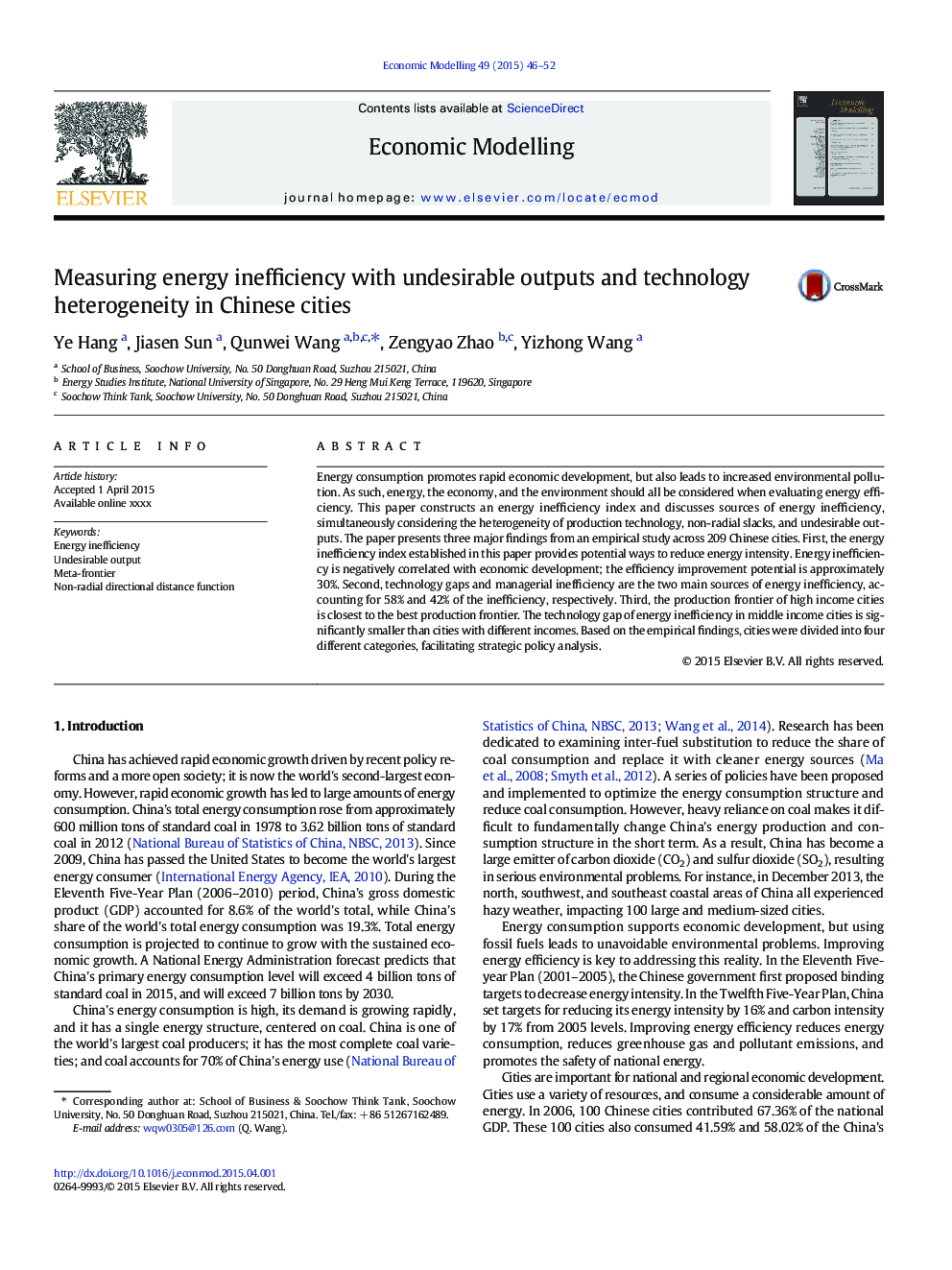| Article ID | Journal | Published Year | Pages | File Type |
|---|---|---|---|---|
| 5053810 | Economic Modelling | 2015 | 7 Pages |
Abstract
Energy consumption promotes rapid economic development, but also leads to increased environmental pollution. As such, energy, the economy, and the environment should all be considered when evaluating energy efficiency. This paper constructs an energy inefficiency index and discusses sources of energy inefficiency, simultaneously considering the heterogeneity of production technology, non-radial slacks, and undesirable outputs. The paper presents three major findings from an empirical study across 209 Chinese cities. First, the energy inefficiency index established in this paper provides potential ways to reduce energy intensity. Energy inefficiency is negatively correlated with economic development; the efficiency improvement potential is approximately 30%. Second, technology gaps and managerial inefficiency are the two main sources of energy inefficiency, accounting for 58% and 42% of the inefficiency, respectively. Third, the production frontier of high income cities is closest to the best production frontier. The technology gap of energy inefficiency in middle income cities is significantly smaller than cities with different incomes. Based on the empirical findings, cities were divided into four different categories, facilitating strategic policy analysis.
Related Topics
Social Sciences and Humanities
Economics, Econometrics and Finance
Economics and Econometrics
Authors
Ye Hang, Jiasen Sun, Qunwei Wang, Zengyao Zhao, Yizhong Wang,
